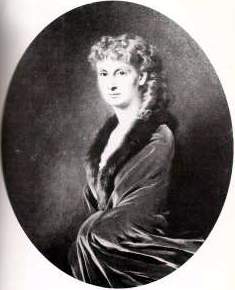 MAJOR UPDATES: André Portraits by Franz Xaver and Hermann Winterhalter
MAJOR UPDATES: André Portraits by Franz Xaver and Hermann Winterhalter
No 277 – portraits of Edouard André (1833-94); and Jean André (1794-1850) – I acknowledge that the authorship of both portraits is disputed; and that both portraits are also ascribed to Hermann Winterhalter. The matter is complicated by the fact that members of the André family were painted by both Franz Xaver and Hermann Winterhalter.
Whereas the portraits of Edouard André father, Ernest André (1803-64, no 275) and step-mother, Louise Gudin, Mme André (1806-73, no 276), are clearly signed by Franz Xaver Winterhalter, no 277 is only known from a copy (note that in numerous Musée Jacquemart-André guides, all three portraits are erroneously identified as being by Hermann Winterhalter). Furthermore, Wild records childhood portraits of Edouard André by Hermann (q.v. no. 1) rather than Franz Xaver Winterhalter.
No 277a has been variously ascribed as a portrait of Jean André (1794-1850) or Louis-Eugène André (1800-1861), and as being by Franz Xaver or Hermann Winterhalter respectively. Once again, Wild does not list either of the sitters on Franz Xaver’s list, but enters Mr. Louis André on Hermann Winterhalter’s list.
Clearly, further research is required for both portraits. Therefore, for the time being, nos 277 and 277a are left on Franz Xaver Winterhalter’s list with the note about disputed authorship. Both portraits are also entered on Hermann Winterhalter’s list (q.v. nos 1 and 85 respectively).
In a recent email from a fellow researcher, I was alerted to the incongruity of no 303, Pedro II, Emperor of Brazil, which was dated from around the middle of the 1840s.
The earlier provenance of this work is unknown. It appeared at Sotheby’s Zürich, Europäische Malerei und Moderne und Zeitgenössische Druckgraphik, 25.09.2000, lot 110, unsigned and undated, as a portrait of Pedro II, Emperor of Brazil, by Franz Xaver Winterhalter. It was initially entered it into my catalogue as such.
Further research revealed that a portrait of Don Pedro, Kaiser von Brasilien was mentioned by Wild as work by Hermann Winterhalter, rather than Franz Xaver, with a possibility of it being drawn in Karlsruhe.
On the basis of the image, the Emperor looks like he is in his 50s. This would mean that the portrait is definitely not from the 1840s, but probably dates from the 1870s. This would also coincide with the fact that Pedro II was in Europe and visited Germany between 1871 and 1872, and then again between 1876 and 1877. I have not been able to find out yet exact dates of his presence in Germany, and / or especially in Karlsruhe, where both Franz Xaver and Hermann lived at the time.
Purely on the basis of the image, I believe a correct date for the drawing should be around 1876-77, when the Emperor would have been in about 50-52 years old (this also corresponds with contemporaneous photographs of the Emperor taken around this time). Thus this could only be a work by Hermann Winterhalter, as Franz Xaver died in 1873.
© Eugene Barilo von Reisberg 2012


















